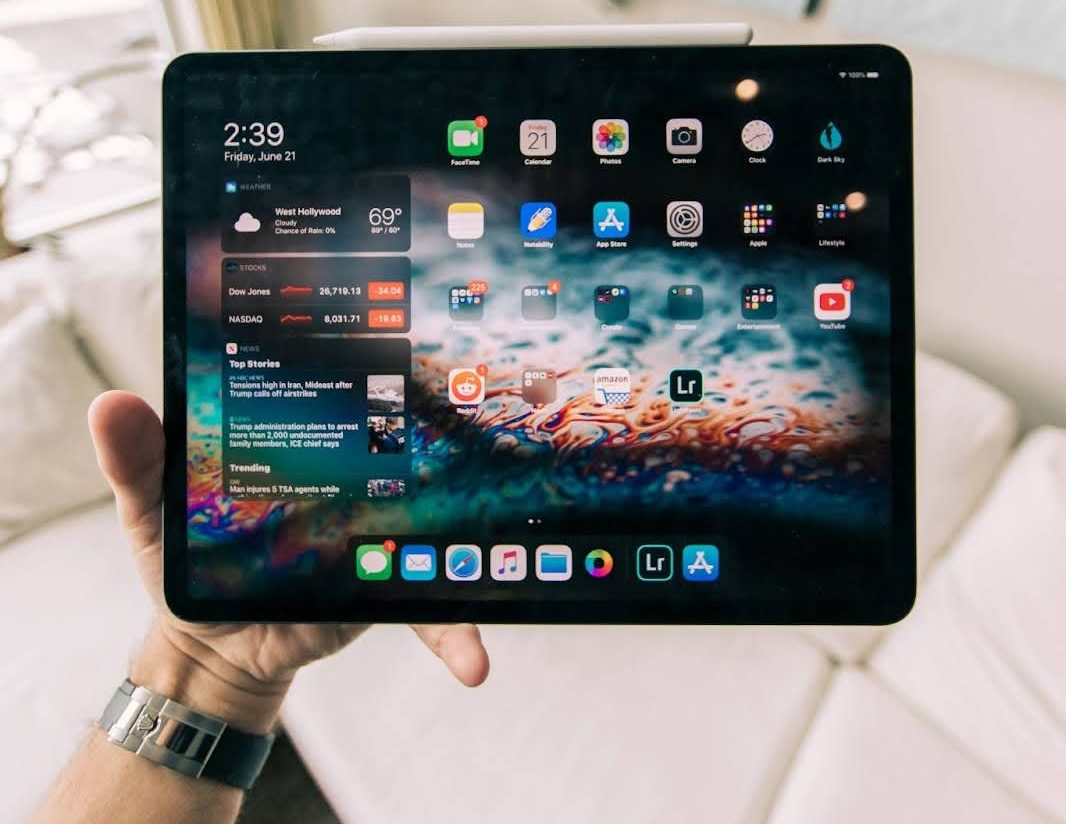The Best Time To Work For Peak Productivity

When is the best time to work?
Is the whole 9-5 workday really the best structure for the workday? Given how different each person is, maybe, just maybe, a single rigid schedule might not be ideal.
Where did the idea come from?
The idea first arose in the early 20th century as various labor unions in the United States started to push back against the backbreaking 12 – 14 hour workdays that many manufacturers required from their employees.
By 1938, President Franklin Roosevelt signed the Fair Labor Standards Act, standardizing the number of hours worked each day, along with 40 hours per week, and requiring overtime pay for hours beyond that. That’s where “9-5” originates.
Though this work schedule has been the standard for many years, people are finally starting to realize that this rigidity regarding the workday isn’t always helpful.
So how can you find the best time to work for peak productivity?
Let’s explore the question together.
4 Questions To Help You Determine The Best Time To Work
The first step in determining your ideal working hours is to figure out when your mind and body naturally work the best. From there, you can determine when you’ll work on low-value tasks, collaborate with others, and more.
Start with the following four questions.

When are my physical and mental energy levels highest?
For the most part, we all have daily patterns regarding energy levels. Some people hit the ground running as soon they get out of bed. Others take some time to wake up and don’t hit their stride for an hour or so. Being aware of your energy patterns and working in accordance with them can help you work more effectively.
To determine the best time to work and when you’re most productive, consider what time of the day you feel the most energized. This could be right after you wake up and have breakfast, or it could be in the late hours when the rest of the house is asleep.
For most people, their cognitive abilities are highest between 8 am and 2 pm. In one study, researchers tested people’s logical reasoning skills at six different times during the day. The researchers note:
Subjects performed two tests of logical reasoning at each of six different times of day. In terms of speed, performance on both tests was found to improve markedly from 08.00 to 14.00 [2:00 pm] and then to fall off fairly rapidly. Accuracy was found to decrease fairly linearly over the day.
The takeaway? Tasks that are mentally demanding should probably be done early in the day.
Another consideration is whether or not you need to take a break between working hours. For some people, waking up early, working from 7 am – 12 pm, and then pausing to take a power nap or go for a walk helps them recharge for the rest of the day.
If you aren’t locked into the 9-5 schedule, you have more freedom to take extended breaks when your productivity may be lower. If you are on a 9-5 schedule, you may not be able to take extended breaks, but you can still take a short breather as your energy levels begin to fall.
Ask yourself: at what time of day…
- Am I the most awake?
- Do I get the most work done?
- Do I feel the least lethargic?
- Do I feel as though I need a break?
Understanding the “ultradian rhythms” of your body can help you answer some of these questions. Without going deep into the science, ultradian rhythms are the natural cycles of energy you experience every day. Every 90 – 120 minutes, you experience a rise, peak, fall, and trough in energy levels.
Ideally, you want to work when your energy is rising and peaking, then take a short break when your energy levels bottom out. If you’re not sure when your peaks and troughs are, consider keeping a log for a few weeks of how you feel throughout the day. Or, you can use the Rise sleep app, which helps calculate things based on how you sleep.
Once you have a good handle on how your energy increases and falls throughout the day, build out a schedule that maximizes your “best time to work hours” and gives you rest when you need it.

When am I least distracted and most focused?
According to researchers at Pennsylvania State University, most of us are far less distracted in the morning than we are between noon and 4 pm. The reasons for this vary based on the individual, but contributing factors include declining alertness after a meal (lunch) and the fact that daytime sleepiness peaks around 2 pm.
All this to say, to find the best time to work, think about the times of day when you’re least distracted. You should take into account internal factors (energy levels, alertness, etc.) as well as external factors, like coworkers making requests, surrounding noise levels, etc.
For example, if you work from home and you have kids, a spouse, or pets who operate on a schedule of their own, they may be causing distractions. If the kids come home from school at 4pm and start making lots of noise, consider halting work and resuming later once the kids have gone to bed.
Another consideration is the impact of caffeine. Many working people rely on caffeine to jumpstart their productivity, but this can lead to a caffeine slump a few hours later. If you know when the slump starts to hit and you begin to lose focus, it may be time to take a break, get some fresh air, do some light physical activity, or get some more caffeine.
If you’re struggling to stay focused even during quiet hours, Freedom can be your superpower. You can use it to block those time-wasting websites and apps that distract you and keep you from being productive.
When am I required to help someone else (meetings, calls, etc.)?
If you’re like most people, your schedule is not entirely your own. You work with a team, which means meetings, calls, requests for help, etc.
If you know in advance when demands will be made on your time, you can structure your schedule around those times so that you make the most of the hours that belong only to you.
For example, if you know that you have a meeting at 11 am and that your peak productivity hours are between 7 am – 12 pm, you can start your day earlier so that you have more time to work on important tasks.
Then you can use your afternoon hours for tasks that don’t require as much energy.

What low-value tasks am I required to complete each day/week?
We all have low-value tasks we need to get done each week.
Low-value are necessary tasks that don’t usually move the needle much in terms of your big goals and projects. They can include things like:
- Chat messages and voicemails
- Data entry
- Invoicing
- Paying bills
- Bookkeeping
Make sure you know which of these you need to get done regularly and block out time during your less productive hours.
You want to reserve low-value tasks for hours where you’re prone to a mental slow down. High-value tasks require far more focus and intensity, so you want to reserve those for your “best time to work” hours.
For example, rather than responding to emails throughout the day, process your inbox in batches later in the day.
7 Strategies For Creating The Perfect Work Schedule
Now that you’ve thought about when you work best and how you should begin dividing your time, it’s time to form your schedule.
Here are 7 ways you can utilize your peak productivity hours for maximum output.
1. Map out what your ideal day would look like
You have an idea of when you work best. With that in mind, create a schedule for yourself. You can use a digital calendar, such as Google Calendar or Apple’s native Calendar app, or you can also use good old pen and paper.
This schedule should include time for:
- Answering emails
- Meetings
- Breaks (lunch, dinner, exercise, picking up the kids, etc.)
- Solo time for your own projects
- A divide between low-value and high-value tasks
Although it may feel like a waste of time, sitting down and mapping out your ideal day gives you a structure to target. Obviously, every day won’t be perfect, but mapping things out means you’re far more likely to be intentional about dividing your time in a way that maximizes your output.

2. Time block your day
Time blocking simply means dedicating specific hours to specific tasks. For example, if you know you need to review the latest ad campaign for your company, time blocking means allocating specific hours for that task (say, 8 am – 10 am).
The big advantage of time blocking is that it allows you to take control of your schedule. You know exactly what you’ll be working on throughout the day, which helps you dedicate time to the most important tasks.
Further, time blocking gives you a better overview of your schedule and allows you to say no to ad-hoc requests from coworkers. This is especially helpful if you’re prone to being a people pleaser and taking on more than you can handle.
For example, if someone asks you to attend a meeting for them, you can tell them that your schedule for the day is full.
Lastly, the power of time blocking extends beyond work. If reading, exercising, meditating, or any other task is important to your wellbeing, you can block those out on your calendar. It’s easy to let self-care tasks fall by the wayside, but if you’ve dedicated time to them on your calendar, they become a priority.
3. Do your most important tasks first
Since most people’s peak production hours are between 8 am – 12 pm, it’s critical to schedule your most important tasks first.
You want to use your best hours for the tasks that will have the biggest impact.
If you aren’t sure which of your tasks are considered high-value, ask yourself these questions:
- Will accomplishing this task bring me closer to my larger goals?
- How large is the impact of finishing this task or project?
- Does this project have a significant effect on the company’s bottom line?
One strategy for prioritizing important tasks is to create a “Big Three” list. At the end of each day, make a list of the most critical three tasks you need to work on the next day. Then work on those tasks first, and don’t do anything else until you’ve completed them.
Although it’s a general rule that most people are the most productive between 8am – 11am, that isn’t true for all of us. If your most productive hours are late at night, schedule these high-value tasks for then.

4. Do deep work at peak energy times
Deep work (a term coined by Cal Newport), is extended periods of highly focused work on important, meaningful tasks. You’re not working on low-value tasks that don’t require much effort. You’re working on important things that demand all your concentration.
Deep work is important for making progress on your most important tasks. For example, if you’re trying to write a novel, you can’t expect to make much progress in just a 20-minute writing session. You need extended periods of time where you can just write.
Schedule deep work sessions for when your energy levels are at their highest.

5. Batch low-value activities at low energy times
Batching simply means doing certain activities during a dedicated time, rather than throughout the day. We already mentioned dealing with email in this way, but that’s not the only task you can batch. Ideally, you want to batch together as many low-value activities as possible and then do them when your energy levels are low.
For example, if there are certain work-related chat threads that don’t require immediate response, respond to all of them at one time rather than responding in real-time throughout the day.
6. Automate or delegate wherever possible
There’s no shortage of tasks that can be delegated or automated. Tools like Zapier and IFTTT allow you to automate a huge number of tedious digital tasks. For example, you can automatically create a new social media post every time you publish a blog post, or create an alert in Slack whenever you receive an email from a specific sender. The more you can automate, the more you can free yourself up to do other things.
For those tasks that can’t be automated, such as answering emails or certain types of data entry, consider hiring a virtual assistant to whom you can outsource that work. VAs are extremely helpful because they free up your time from administrative or other low-value tasks, so you can focus on what matters.
VAs can do a variety of tasks, including:
- Research
- Content creation
- Answering messages on social media
- Answering emails
- Ordering supplies (or food!)
- Scheduling meetings
- Editing copy
- Bookkeeping
- Invoicing
- Slideshow production
This is nowhere near a comprehensive list. VAs can essentially do whatever you need as long as you give them the resources they need.
When it comes to outsourcing, you’ll want to create in-depth guides and standard operating procedures for them. These should spell out exactly how to accomplish various tasks, including what information they need to include, how it should be formatted, etc. Leave nothing to guesswork.
Once you’ve got automation and delegation in place, you’ll find that a significant amount of time will be added back into your schedule.
There are a number of websites where you can hire a virtual assistant, including Zirtual, FreeUp, Upwork, and Fiverr. Just be aware that if you use a more general marketplace, like Upwork, you’ll want to thoroughly vet someone before you hire them since anyone can list their services on those platforms. With platforms like FreeUp and Zirtual, you’ll probably pay more but you can be confident that the VAs have already been vetted.

7. Prepare in advance for the next day
Preparing in advance for the next allows you to hit the ground running in the morning. We already talked about lining up your most important tasks, but that’s not the only way to prepare in advance.
If you’re going to the gym, lay out your clothes in advance. Choose the clothes you’re going to wear and get the coffee pot ready. You can even prepare your breakfast and lunch if you’re able.
This may sound extreme but it can actually significantly increase your productivity. Why? First, it reduces the number of decisions you need to make during the day, which frees up mental energy to use on more important things. Additionally, it allows you to start working sooner, giving you more time to work during your peak hours.
Find Your Best Time To Work
The reality is that there is no single best time to work. The best time for you depends on a variety of factors, including energy, external demands, distractions, and more.
Finding your best time to work will probably take some experimentation. You may discover that you’re one of those people who does their best work very early in the morning. Or you may find that you have two periods of peak productivity, one in the morning and one in the early afternoon.
Whatever the case, as much as possible, try to build your schedule around the rhythms of your body. If you do, you’ll find it much easier to be productive and knock out the tasks that have the biggest impact.



